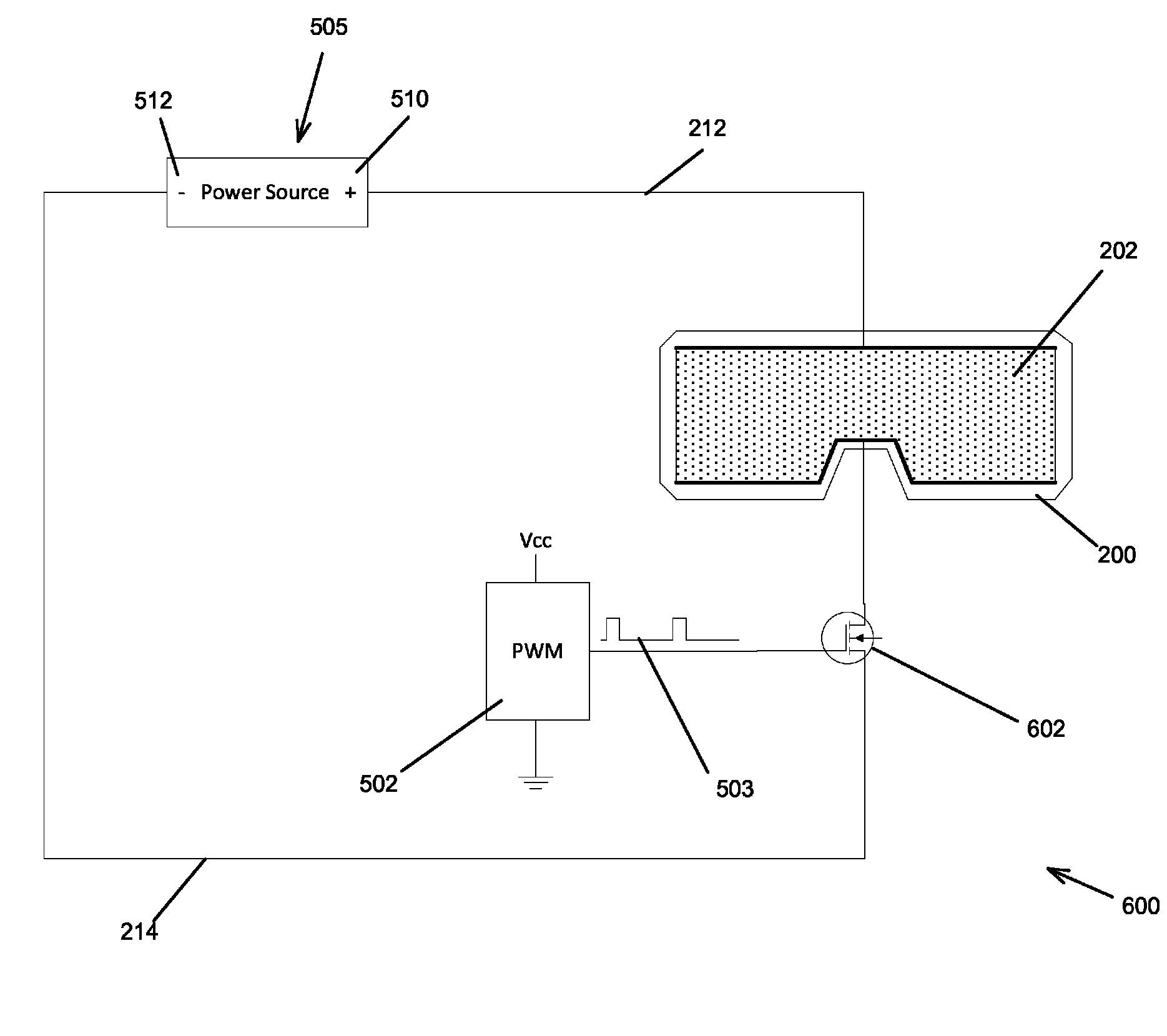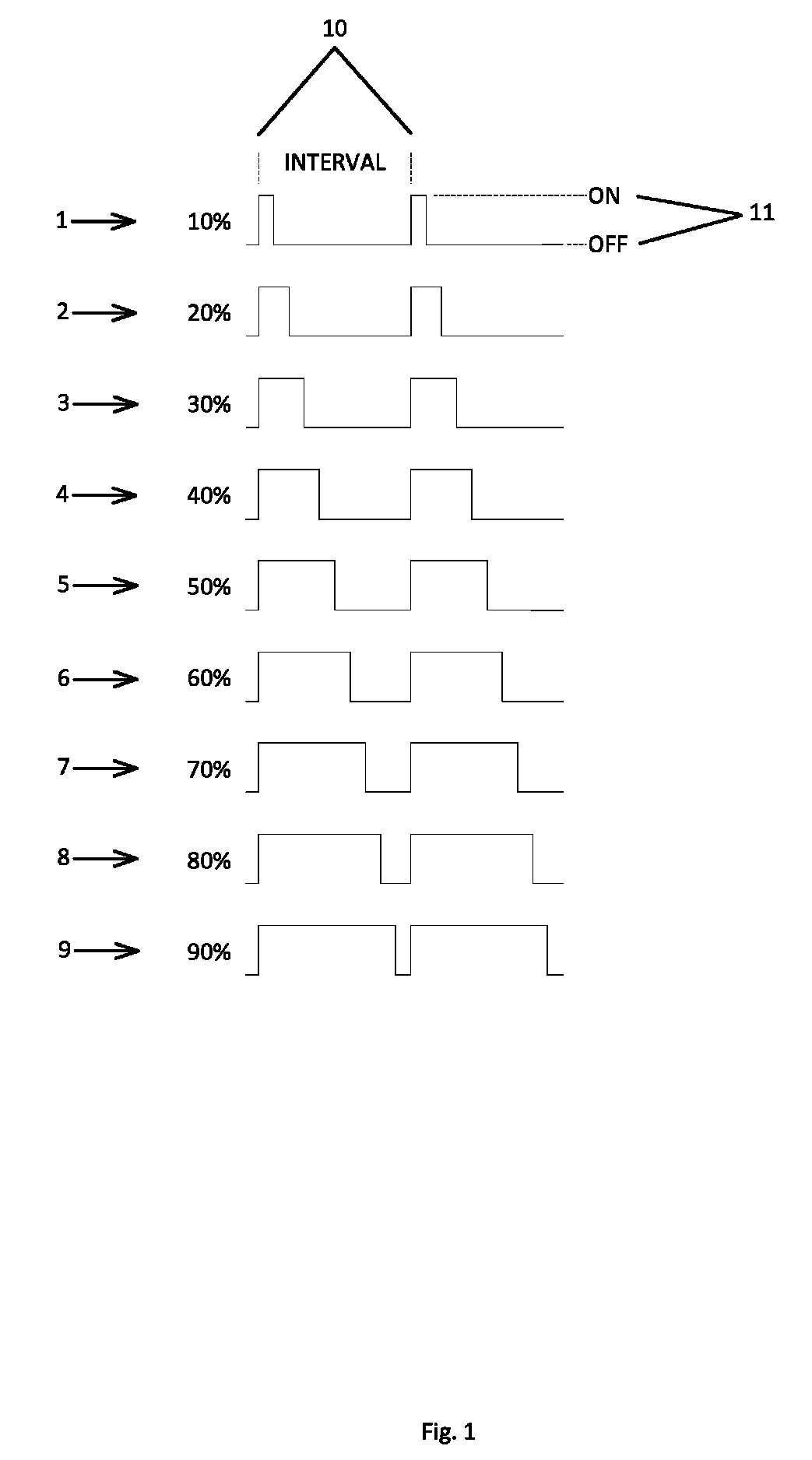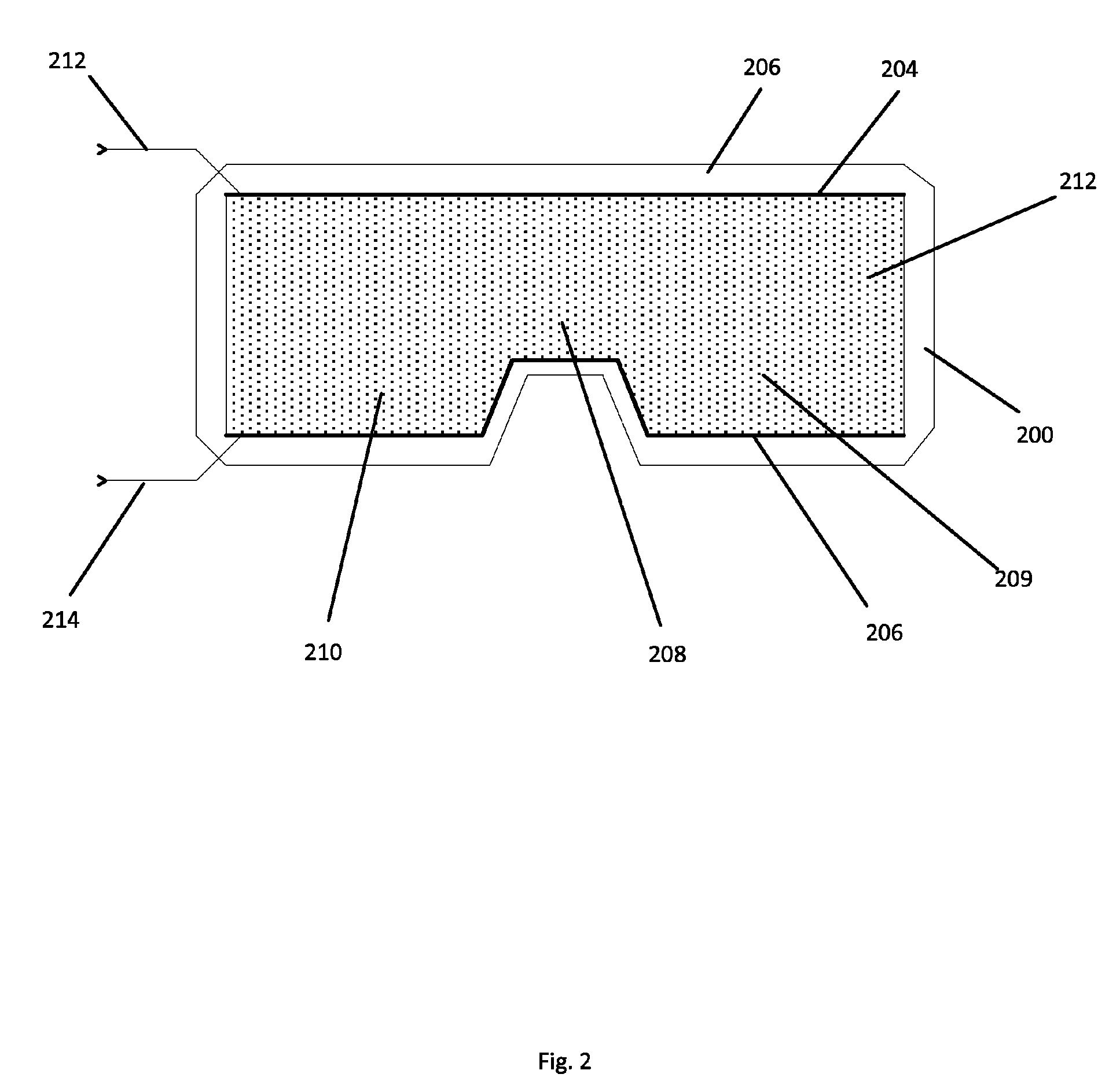Battery compensation system using PWM
a battery compensation and battery technology, applied in process and machine control, underwater equipment, instruments, etc., can solve the problems of reducing the voltage output of lithium-ion batteries, fogging impairing vision, and not as well known in other directions, so as to reduce the amount of attention, reduce the effect of temperature management, and effectively prevent fogging
- Summary
- Abstract
- Description
- Claims
- Application Information
AI Technical Summary
Benefits of technology
Problems solved by technology
Method used
Image
Examples
first embodiment
[0064]Referring to FIG. 2, there is provided in accordance with part of the invention an eye shield lens or protective eyewear 200 adapted for at least partially defining an enclosure around a user's eyes and having thereon a single-region resistive transparent conductive film heating member 202. Along an upper edge of the film heating member 202 there is a bus-bar heating element 204 interconnected with a power source (not shown) via a lead wire 212. The film heating member 202 may be comprised of indium-tin oxide (ITO) or other material designed in the form of a resistive element that generates heat when connected to an electrical circuit.
[0065]A lower buss-bar heating element 206 is provided along a lower edge of the film heating member 202 and which is interconnected with the power source via another lead wire 214. As is typical with many eye shields, such as in the case of winter sports goggles, the eye shield lens 200 is irregular shaped having two wider similarly shaped squar...
second embodiment
[0076]Referring to FIG. 4, an eye shield lens 400 is provided in accordance with the invention. The eye shield 400 is adapted for at least partially defining an enclosure in front of the user's eyes and has deposited thereon a plurality (24 are shown in FIG. 4) of resistive heating film zones or regions 402 A-X. It will be appreciated that the resistive heating film may be divided into larger or smaller regions than shown without departing from the true scope and spirit of the invention. Each resistive film region 402 A-X is connected to a terminal of a power source via lead wires and discrete buss-bars 404a-x. A single buss-bar 406, located along a lower edge of each resistive film region 402 A-X interconnects each of the lower ends of film regions to a ground terminal of the power source.
[0077]The resistive film regions of the fog prevention system of the present invention are preferably deposited on the inner surface of an eye shield 200, 300, 400 with a process known as ion sput...
PUM
 Login to View More
Login to View More Abstract
Description
Claims
Application Information
 Login to View More
Login to View More - R&D
- Intellectual Property
- Life Sciences
- Materials
- Tech Scout
- Unparalleled Data Quality
- Higher Quality Content
- 60% Fewer Hallucinations
Browse by: Latest US Patents, China's latest patents, Technical Efficacy Thesaurus, Application Domain, Technology Topic, Popular Technical Reports.
© 2025 PatSnap. All rights reserved.Legal|Privacy policy|Modern Slavery Act Transparency Statement|Sitemap|About US| Contact US: help@patsnap.com



